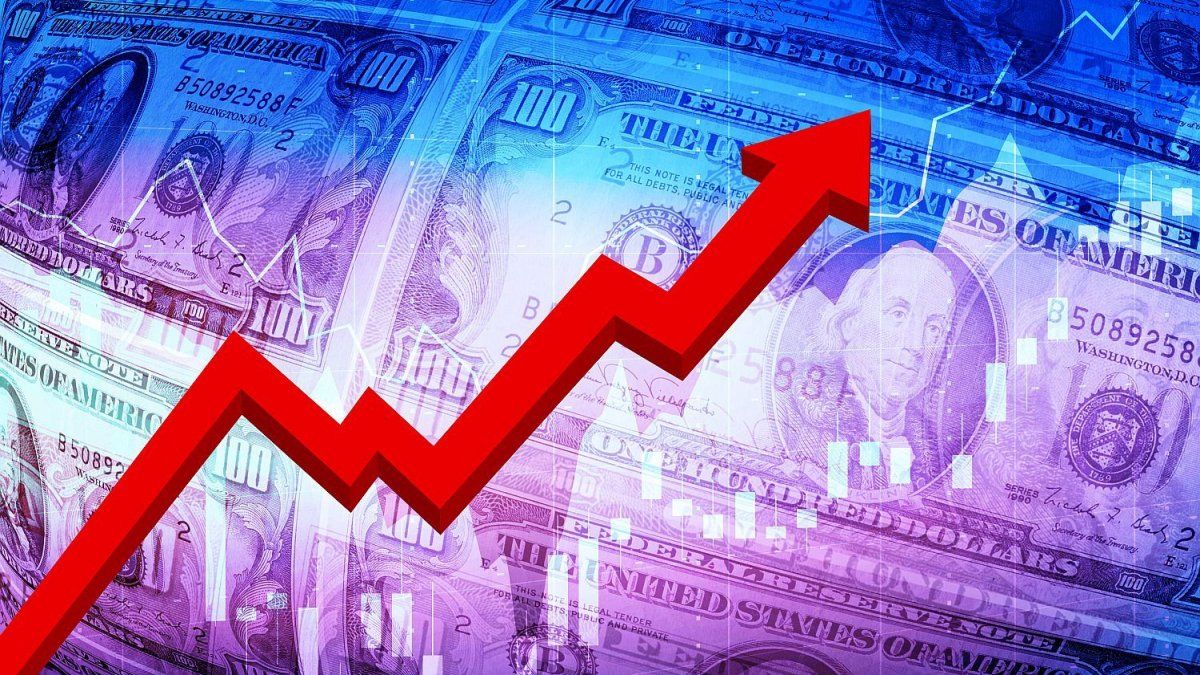He Blue dollar jumped by $40 (+2.9%) This Monday, July 1, he broke his nominal recordwhen closing at $1,375 for purchase and $1,405 for sale, according to the survey of Ambit in the city. The strong advance of the parallel exchange rate was explained by multiple causes, both local as international.
In this context, the gap between the informal and the official closed in 53.7%, its highest value since the December devaluation (54%)which led the spread of the 192% to the 33.8%.
Causes of the rise of the blue dollar
In the local market, the announcement by the Minister of Economy had a full impact on Monday, Luis Caputoand the president of the Central Bank (BCRA), Santiago Bausiliwhich reported on Friday the second part of the economic planwhich in addition to privileging the surpluswill now be added zero emission. In addition, at the same conference they announced that the debt of private banks (Passive Passes) with the Central will pass to Treasurewhich is why they met with the bankers on this day.
“The conference may not have been enough for the market Regarding the definitions of the exchange rate policy and that was seen this Monday. It seems that the stocks will continue for a while longer,” he said. Ambit the Economist Alejandro Giaccoia.
For the economist Federico Glusteinfor its part, the negative reaction of the Argentine markets, both locally and internationally Wall Street, “It is a logical response in an attempt to safeguard himself from what he needs Treasureand that is not being fulfilled.” In that sense, he added to this medium that “There is a lack of concrete announcements, not clichés that do not serve to provide clarity in practice. The plan outlined is what the market needs and it is not being given it, it needs to know what steps it has to take accordingly.”
For his part, the economist Pablo Ferrari indicated to Ambit that the big problem is that the Government “is not able to resolve the flow of dollars”which did not arrive via IMF and that is not coming for the Central reserves either, since “Inflation ate up the devaluation in December and there are expectations of further devaluations”.
A notable example of this is the Delay in the settlement of foreign currency by the agricultural sectorwhich according to what was reported this Monday by the Chamber of the Oil Industry of the Argentine Republic (CIARA) and the Cereal Exporters Center (CEC), During June it fell compared to the previous month and equaled the cumulative total for the first half of 2023.
In turn, the delay in the liquidation of the agricultural sector generates a reduction in the supply of CCL, which after almost 20 days again surpassed the blue, after shooting up $62.30 (+4.6%) to $1,412.48 this Monday.
The acceleration of the parallel exchange rate It is also due to the international stagewhere the currencies of the region, in particular the real, They are devaluing against the US currency The depreciation of the Brazilian currency has a direct impact on Argentina and puts pressure on the peso to devalue as well, in a context that is already unfavourable for the Argentine peso. The explanation for this pressure is basically that our country would become expensive for its main strategic partner.
The devaluation of the real accelerates the marked appreciation of the pesowhich could lead to an increase in the devaluation expectations which has been gaining strength in recent days.
Blue dollar: what can happen next
The lack of concrete announcements from the Treasury Department has a negative impact. In this context, Glustein analyzed: “I think that prices will follow a clearer, downward path when the measures have been applied and provide predictability.” In this context, the parallel dollar could continue to rise towards unexpected ceilings, such as $1,450which is an expensive exchange rate in real terms, but cheap for the market today, which has no positive real rate to migrate their resources, and for this reason, they take refuge in the greenback.”
While, Jorge Neyro, of Delphos Investment, He stressed that to close this mini-run, the Government should “draw up a roadmap on the disarmament of the stocks that convinces the market.” That is, that also takes into account the “implicit suggestion” of the International Monetary Fund (IMF)which as the former Minister of Economy comments Sunday Cavallowith respect to which, at the time when it is in a position to reduce the PAIS tax from 17.5% to 7.5%, also adjust the official exchange rate by 10% and eliminate the derivation to the CCL market of 20% of export earnings.
“With these measures, the purchase of the entire balance of trade will be ensured”commented the Minister of Economy of convertibility in his column.
Source: Ambito
I am a 24-year-old writer and journalist who has been working in the news industry for the past two years. I write primarily about market news, so if you’re looking for insights into what’s going on in the stock market or economic indicators, you’ve come to the right place. I also dabble in writing articles on lifestyle trends and pop culture news.




